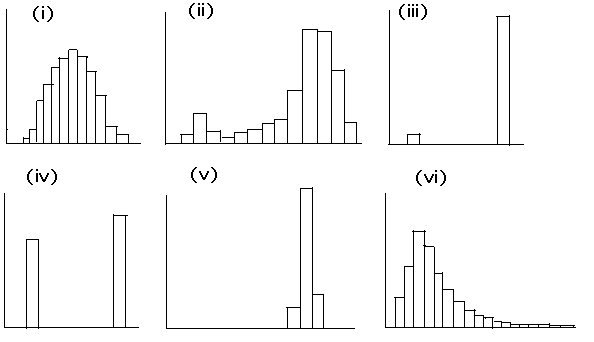- The gender of all persons in a college class (male = 0, female = 1).
- The handedness of all persons in a college class (left handed = 0, right handed = 1).
- The heights of all married persons counted separately.
- The heights of all persons in families where both parents are 28 years old or less.
- The heights of all automobiles.
- The incomes of all persons in the U.S.

Ans: 1 iv, 2 iii, 3 i, 4 ii, 5 v, 6 vi.